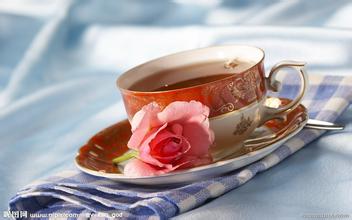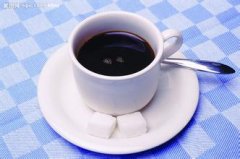Introduction of high-quality coffee beans in Java coffee flavor and taste producing area
Java coffee is famous for its early years, referring to Arabica coffee formerly produced in Java. It has a rich aroma, low acidity, smooth taste, and with mocha coffee, the result is "Java mocha blend coffee" once popular, synonymous with top coffee, fame spread.
Java coffee sold to Europe at that time was a very special coffee. Because it was shipped to European and American countries by sailboat at that time, the journey was long and the speed was slow, so it took a lot of time on the way. Coffee in this case, as if after a special fermentation, taste very unique.
Later, when ships replaced sailboats, people drank fresher coffee beans because of shorter delivery times. But people accustomed to old beans are not used to this fresh taste, so they desperately pursue old Java coffee, so that the Indonesian government and some businessmen deliberately store fresh beans in warehouses for one to two years before selling them to consumers. In fact, the acidity of aged Java beans is reduced to nearly zero compared to fresh beans, while the aroma is more intense. Because of the long storage time, the cost increases a lot, and the quantity is limited, so aged Java has always been a hot commodity in the coffee market. In the 1880s, some unscrupulous traders deliberately tampered with fresh Guatemala or Venezuela beans and sold them at high prices to imitate old Java. What is intolerable is that profiteers dye coffee beans to make them look more like aged java, but there is no doubt that the dyeing chemicals are poisonous
Java coffee is famous for its early years, referring to Arabica coffee formerly produced in Java. It has a rich aroma, low acidity, smooth taste, and with mocha coffee, the result is "Java mocha blend coffee" once popular, synonymous with top coffee, fame spread.
Java coffee sold to Europe at that time was a very special coffee. Because it was shipped to European and American countries by sailboat at that time, the journey was long and the speed was slow, so it took a lot of time on the way. Coffee in this case, as if after a special fermentation, taste very unique.
Premium Java Coffee
Premium Java Coffee
Later, when ships replaced sailboats, people drank fresher coffee beans because of shorter delivery times. But people accustomed to old beans are not used to this fresh taste, so they desperately pursue old Java coffee, so that the Indonesian government and some businessmen deliberately store fresh beans in warehouses for one to two years before selling them to consumers. In fact, the acidity of aged Java beans is reduced to nearly zero compared to fresh beans, while the aroma is more intense. Because of the long storage time, the cost increases a lot, and the quantity is limited, so aged Java has always been a hot commodity in the coffee market. In the 1880s, some unscrupulous traders deliberately tampered with fresh Guatemala or Venezuela beans and sold them at high prices to imitate old Java. It is intolerable that the profiteers dye the coffee beans to make them look more like aged java, but there is no doubt that the dyeing chemicals are poisonous.
Java produces only a small number of arabica beans, most of which are Romstar beans imported from Africa after the rust disaster. This coffee has a strong bitter taste after roasting, but the aroma is extremely light. Although the acidity is relatively low and the taste is relatively delicate, it is rarely used for direct drinking. It is often used to blend coffee or to make instant coffee.
Pests and diseases are really a terrible thing. They have greatly reduced the production of coffee in Brazil and repeatedly dominated the international coffee market. They have also caused Sri Lanka, which once planted coffee trees everywhere, to cut down coffee trees and plant all tea. It also makes Java, which is rich in high-quality Arabica coffee, change to Romstar coffee for fear of pest infestation. Arabica Java coffee, which is regarded as a treasure by people, is far away from people's sight. People's infinite favor and pursuit of Java coffee in those years have also been lost since then.

Important Notice :
前街咖啡 FrontStreet Coffee has moved to new addredd:
FrontStreet Coffee Address: 315,Donghua East Road,GuangZhou
Tel:020 38364473
- Prev

Introduction to the characteristics of Costa Rican coffee flavor and taste varieties in the producing area of fine coffee beans
Other coffees worth mentioning are JuanVinas,PR, H.Tournon, Windmill,SHB, Montebello and SsntaRosa. Fine coffee is generally grown in Geredia and the central canyon. Another eye-catching coffee is Sarchi coffee (sa).
- Next

Introduction to the Flavor of Fine Coffee beans in the Coffee Manor producing area of Guatemala
United Fruit has its largest estate in Guatemala, and it also owns the Central Guatemala Inter-American Railway Company and Guatemala's only seaport. Driven by the United Fruit Company, the US Ministry of Foreign Affairs began a propaganda war against Guatemala to crack down on the Arbens regime in the name of anti-communism. The CIA cooperates with the opposition among Guatemalan soldiers.
Related
- Detailed explanation of Jadeite planting Land in Panamanian Jadeite Manor introduction to the grading system of Jadeite competitive bidding, Red bid, Green bid and Rose Summer
- Story of Coffee planting in Brenka region of Costa Rica Stonehenge Manor anaerobic heavy honey treatment of flavor mouth
- What's on the barrel of Blue Mountain Coffee beans?
- Can American coffee also pull flowers? How to use hot American style to pull out a good-looking pattern?
- Can you make a cold extract with coffee beans? What is the right proportion for cold-extracted coffee formula?
- Indonesian PWN Gold Mandrine Coffee Origin Features Flavor How to Chong? Mandolin coffee is American.
- A brief introduction to the flavor characteristics of Brazilian yellow bourbon coffee beans
- What is the effect of different water quality on the flavor of cold-extracted coffee? What kind of water is best for brewing coffee?
- Why do you think of Rose Summer whenever you mention Panamanian coffee?
- Introduction to the characteristics of authentic blue mountain coffee bean producing areas? What is the CIB Coffee Authority in Jamaica?

